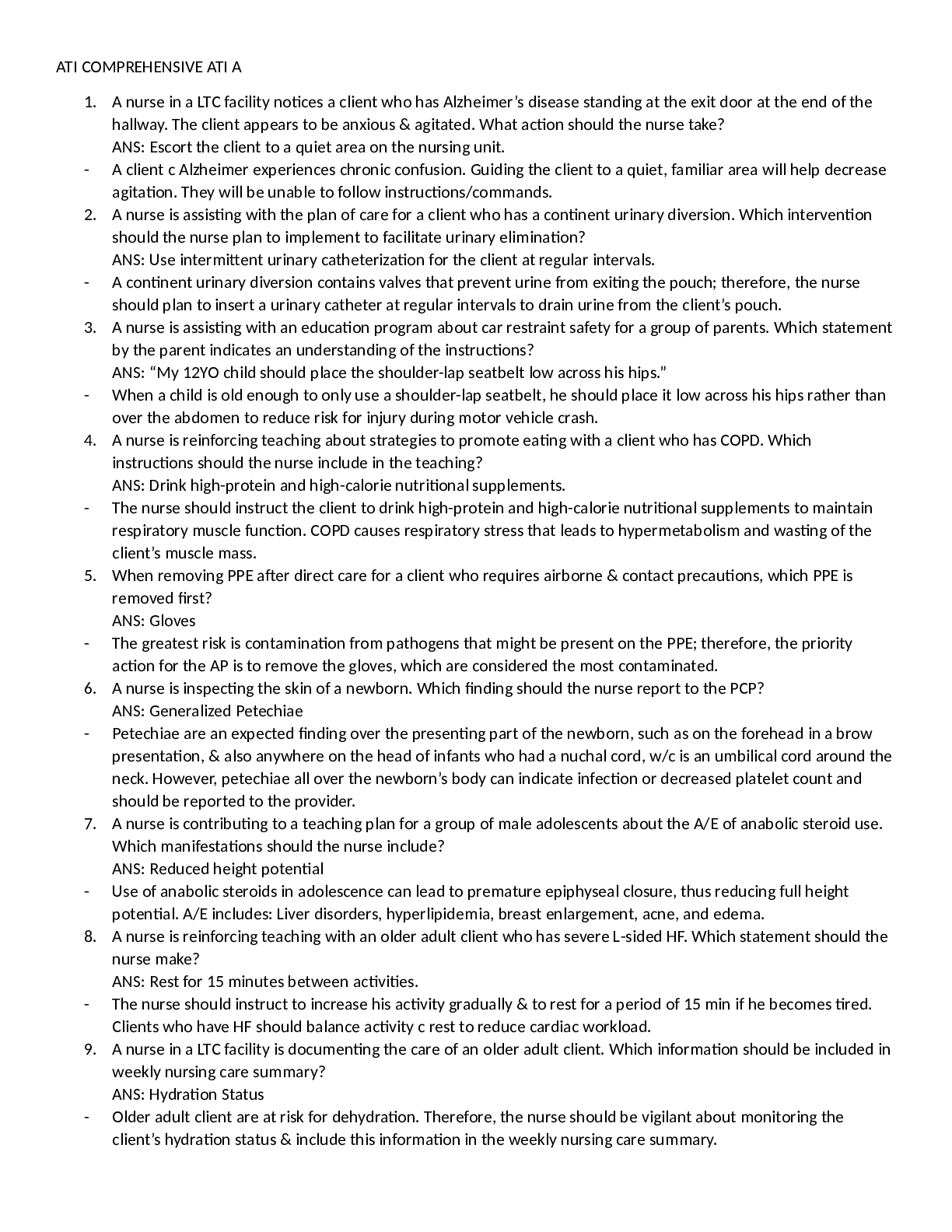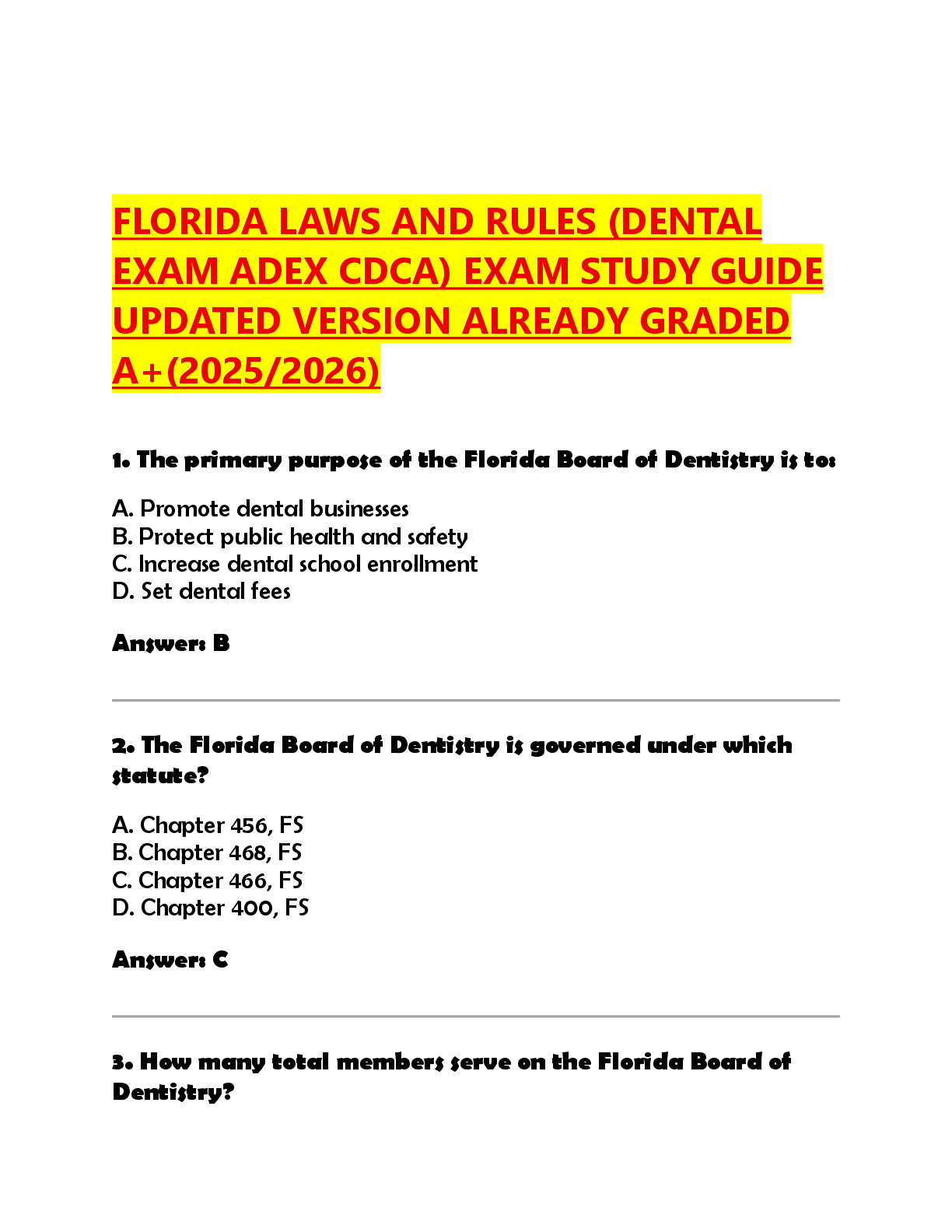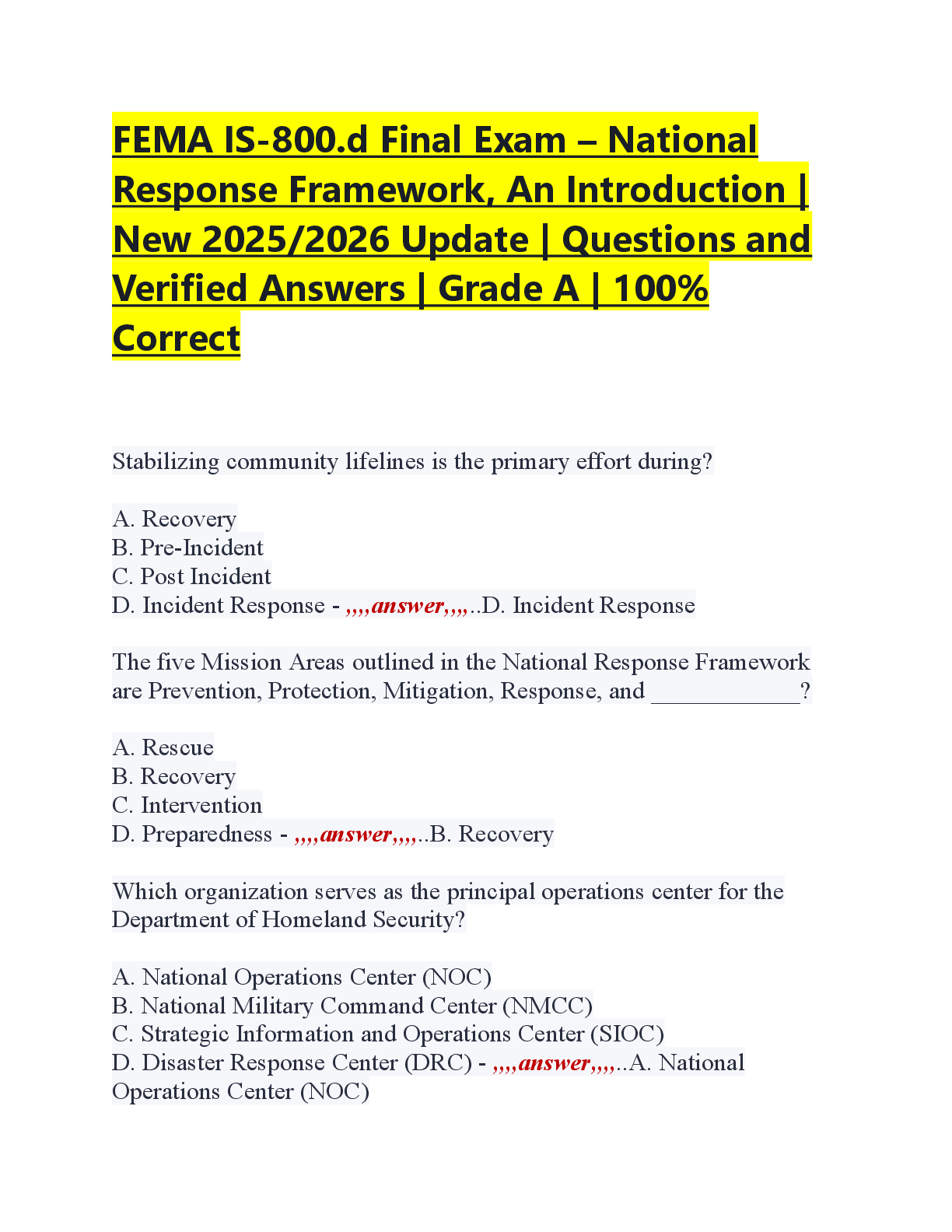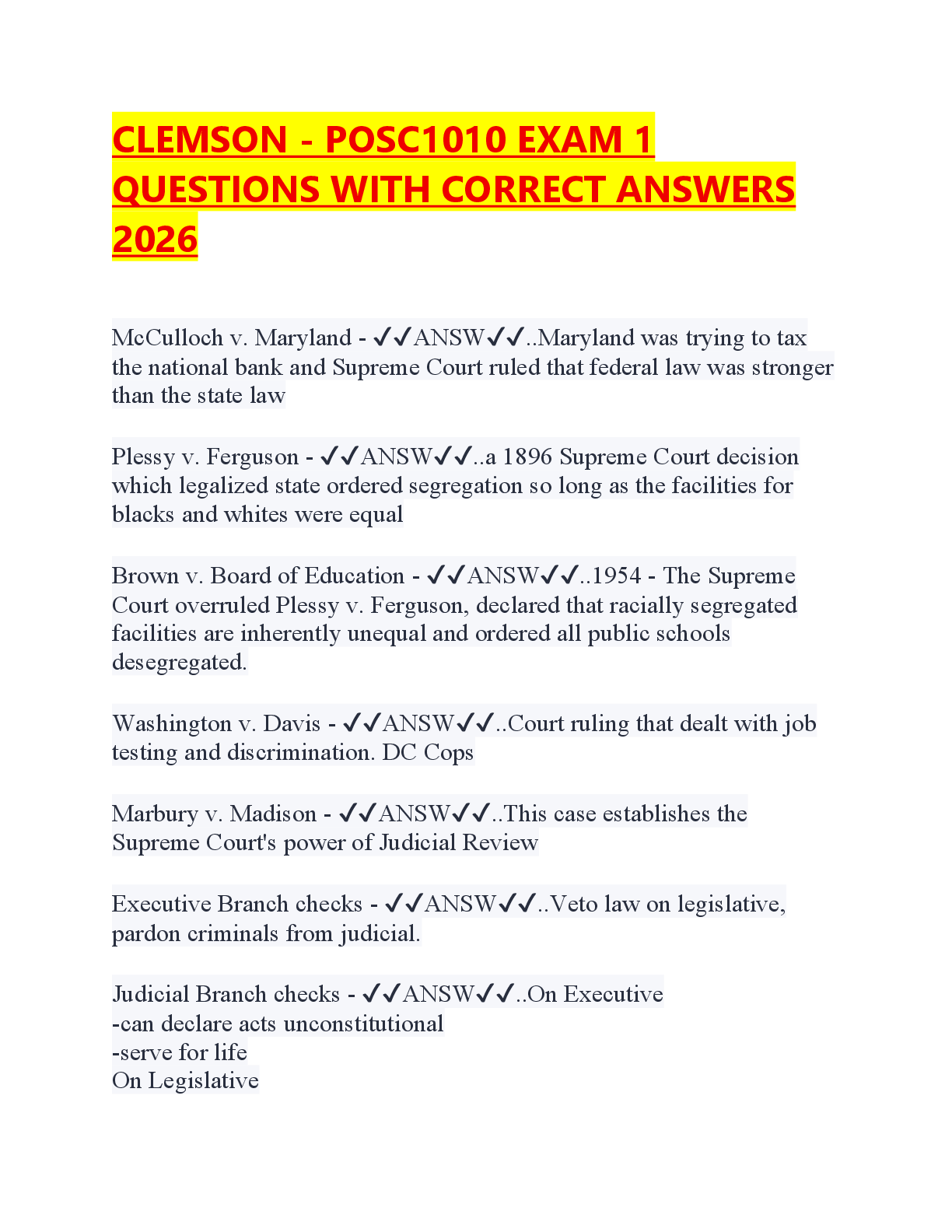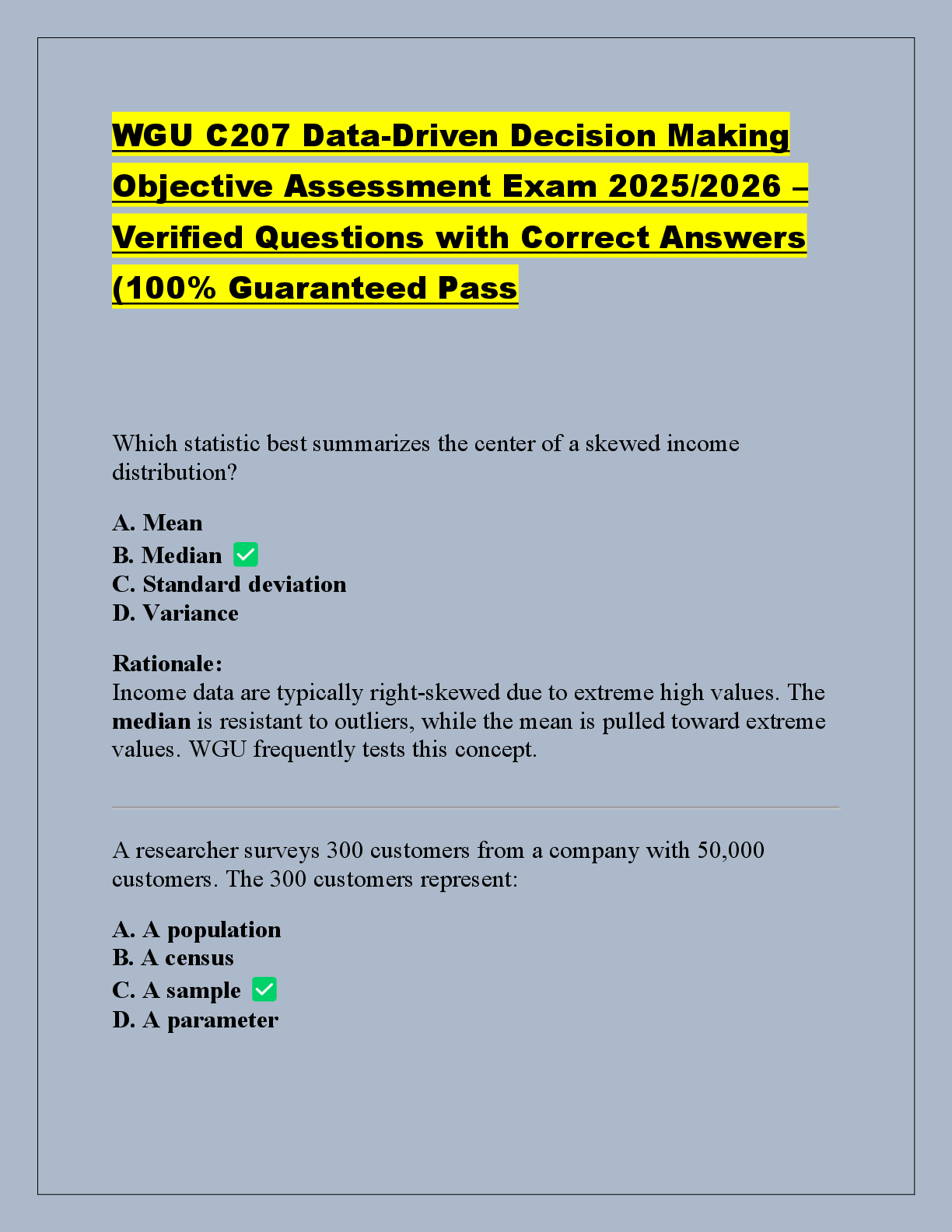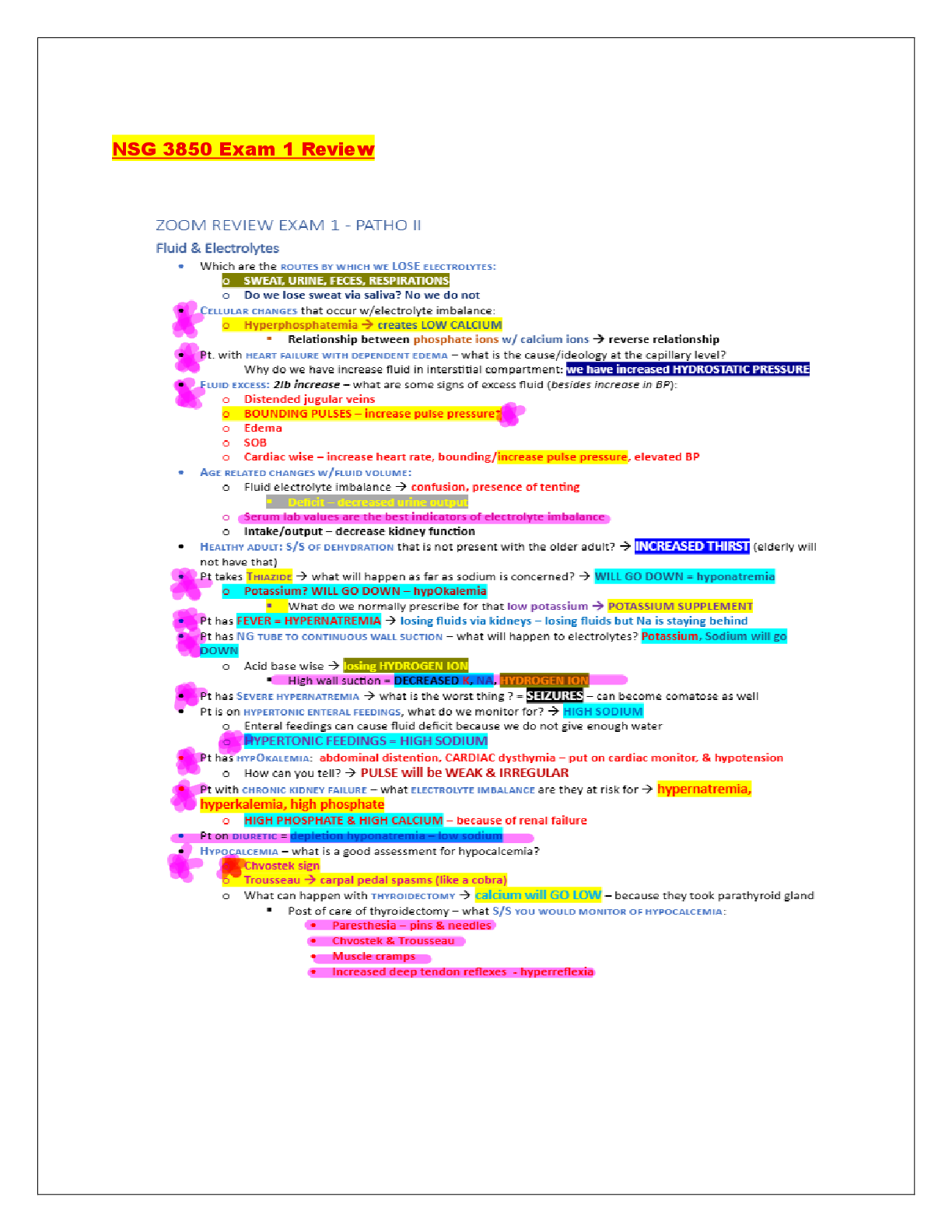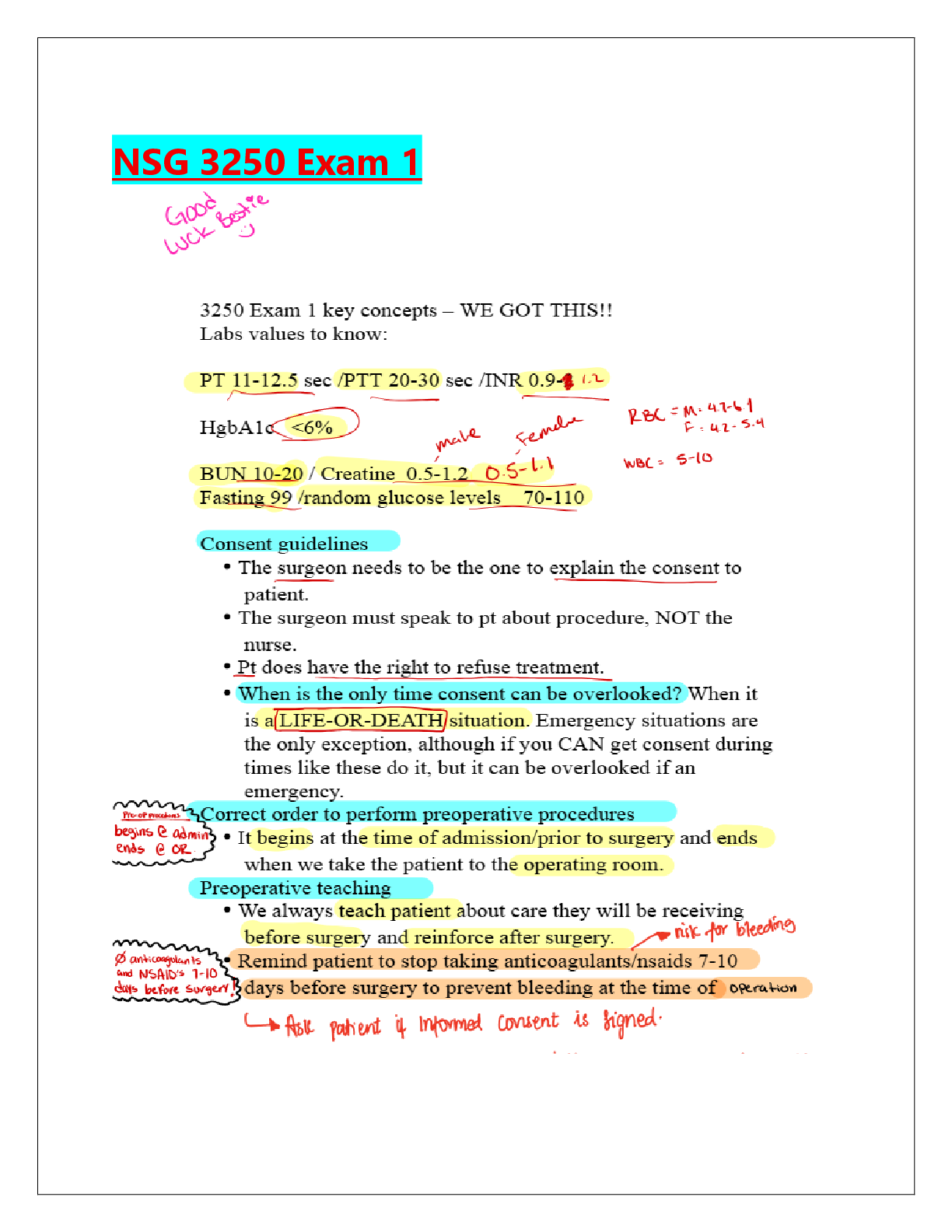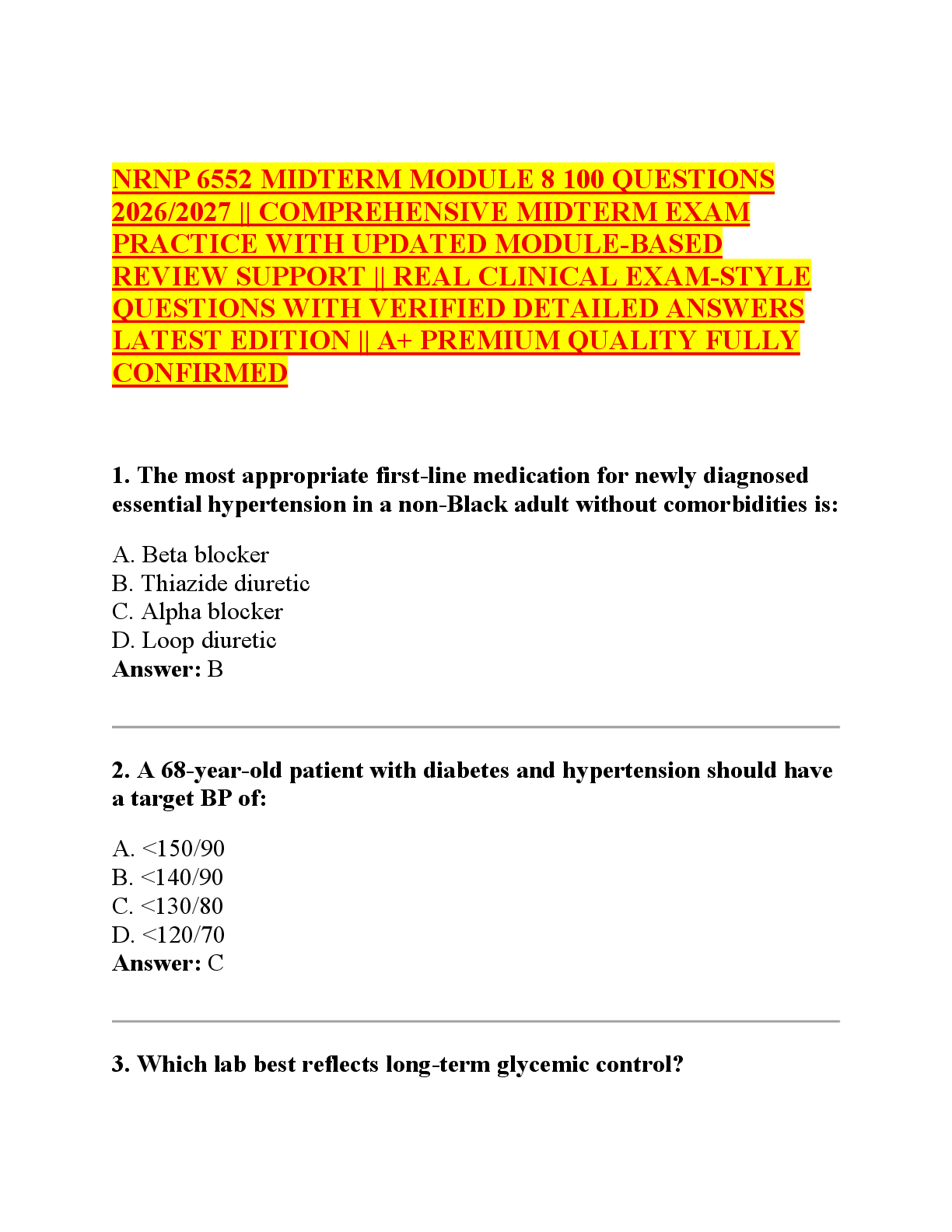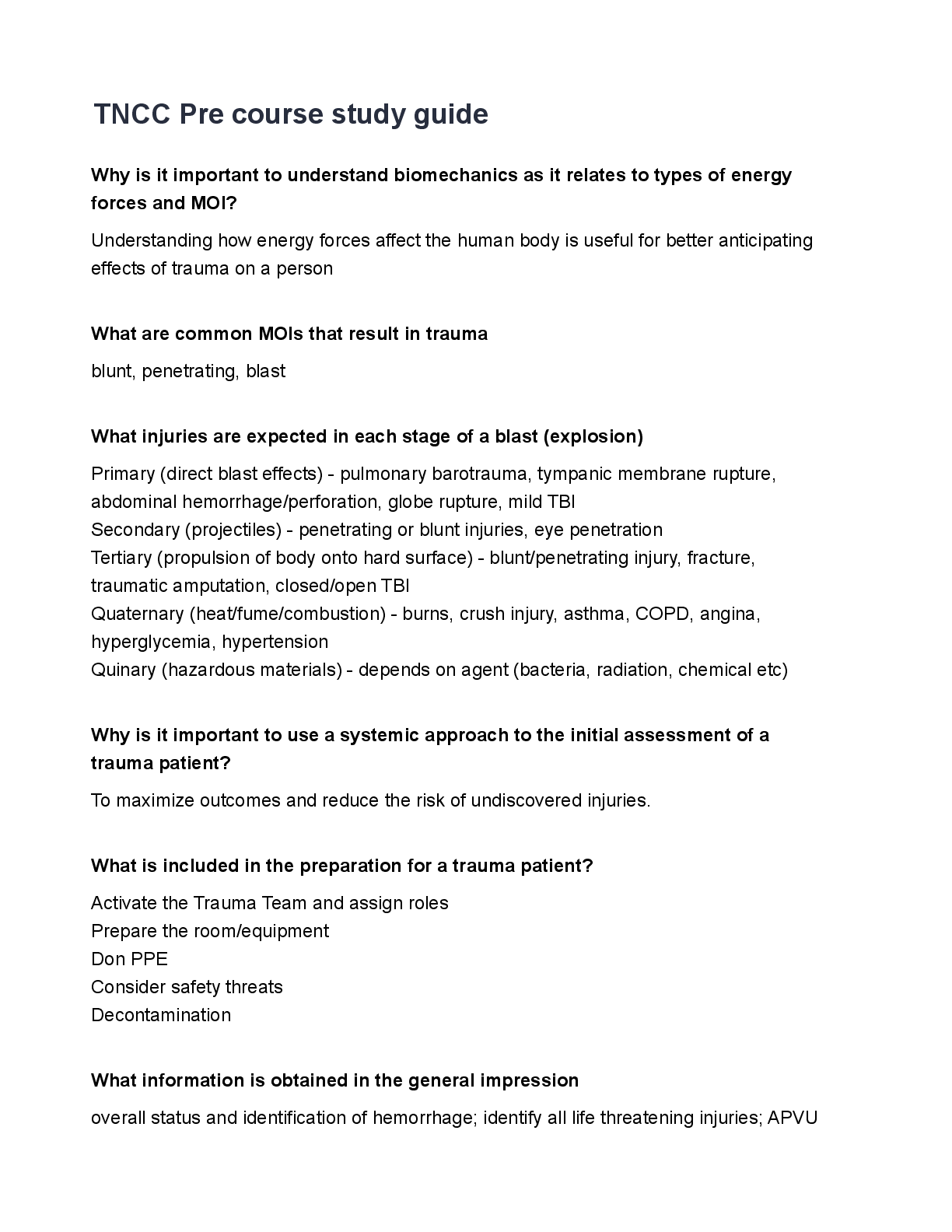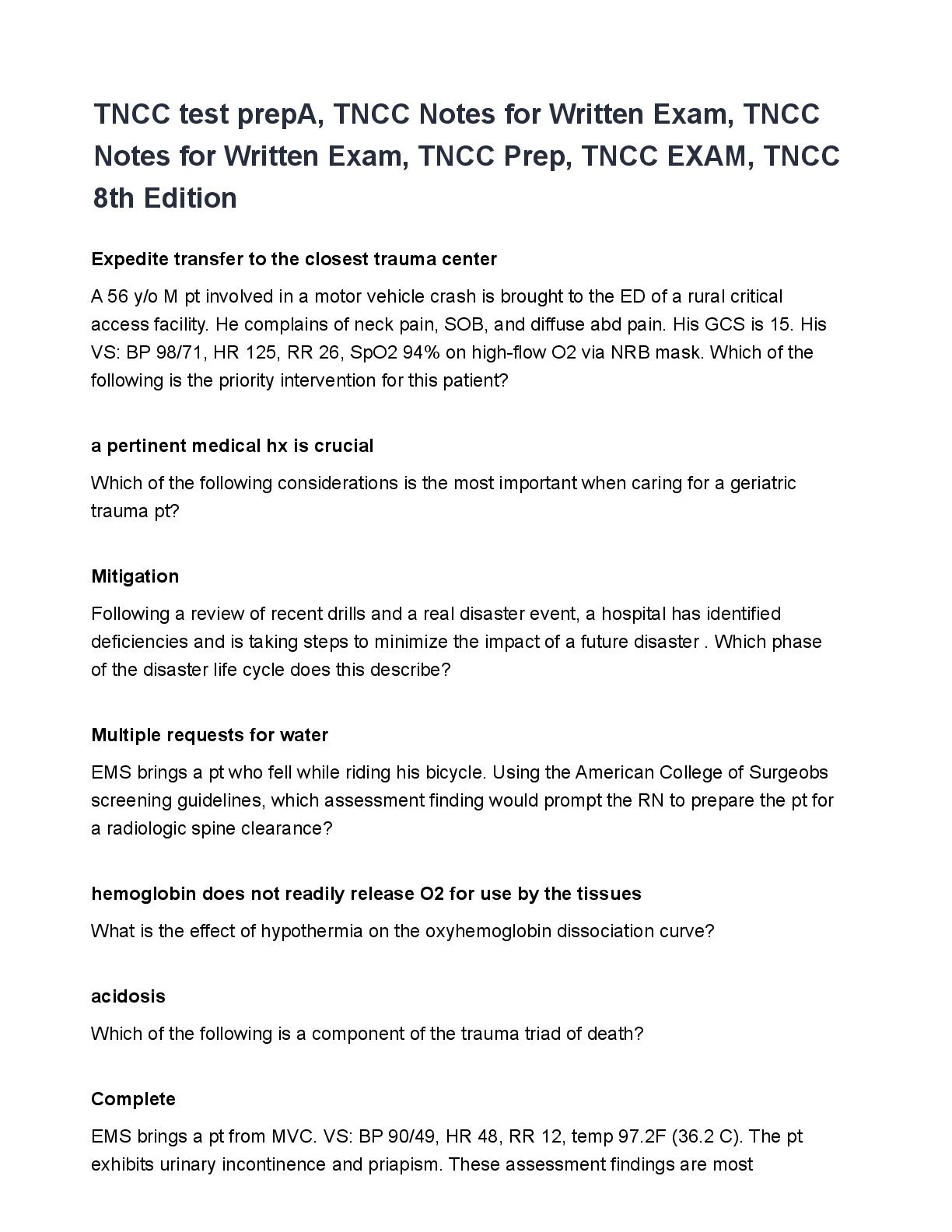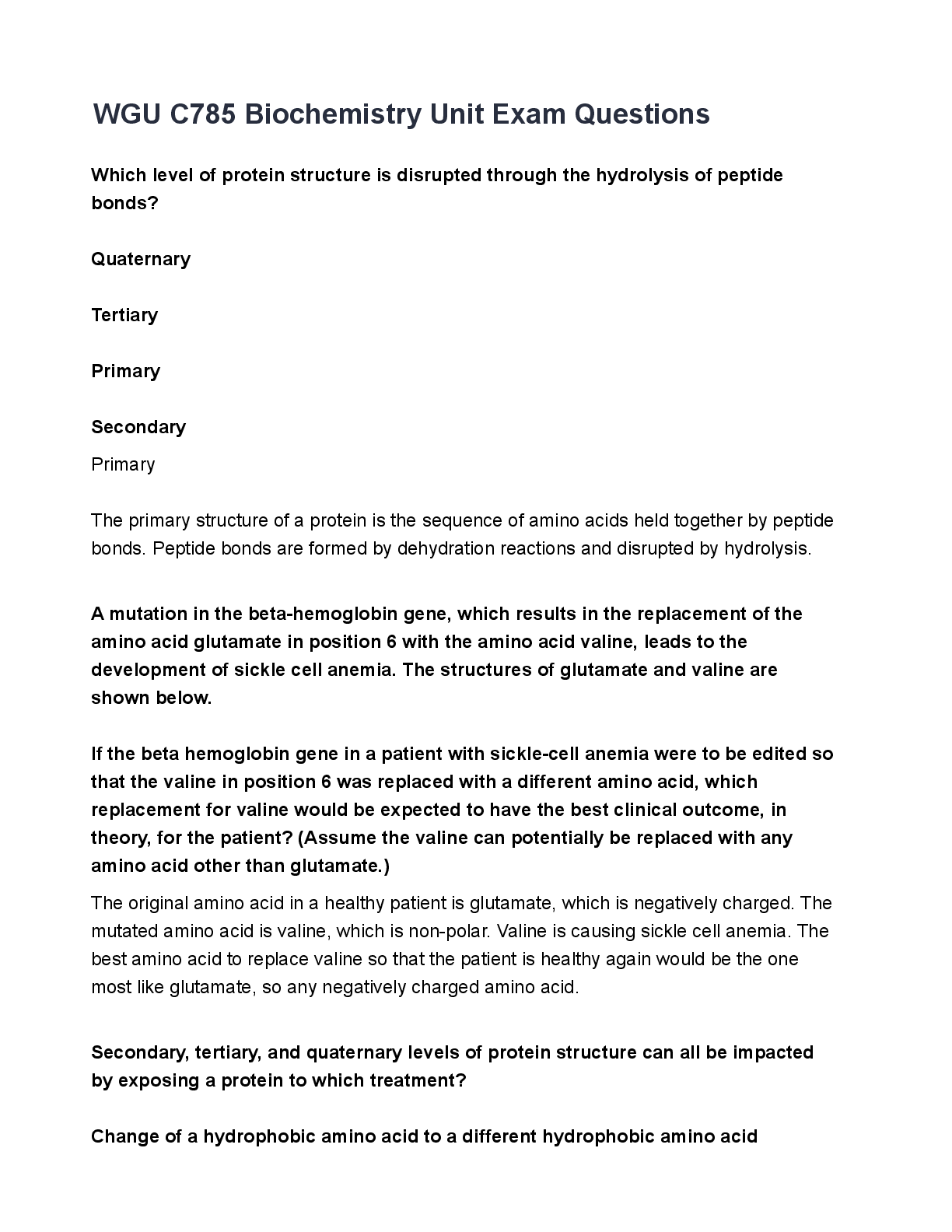NN 14 Health-Care Delivery Systems
Document Content and Description Below
NN 14 Health-Care Delivery Systems 1. What is acute care of sick persons that is provided in hospitals called? A) Primary intervention B) Secondary intervention C) Tertiary intervention D) ... Assistive intervention B) Secondary intervention 2. Identify a negative effect of the centralization of health care in hospitals rather than the home setting. A) Minimized individual responsibility B) Increased concerns about the cost of health care C) Professionalization of nursing D) Increased reliance on advanced technology A) Minimized individual responsibility 3. Which element is usually excluded in the current trend toward decentralized health care? A) Provision of care on an outpatient basis B) Emphasis on the cure of illness C) Promotion of responsible self-care practices D) Cost containment measures by health-care providers B) Emphasis on the cure of illness 4. Which demographic factor has the most significant effect on the health-care delivery system of the future? A) Large numbers of babies being born to minority women B) Increasing use of alcohol and tobacco among teenagers C) Rapidly increasing average age of the population D) Oversupply of nurses C) Rapidly increasing average age of the population 5. Identify the most significant element in the continued rise in health-care costs in the United States. A) Expensive new technology B) Increasing need for long-term care C) Lack of motivation for consumers to comparison shop B) Increasing need for long-term care 6. What is the most important reason why nurses should be familiar with health-care reimbursement methods? A) It allows nurses to be informed client advocates. B) Nursing care plans can be developed based on financial incentives to lower costs. C) Nurses can decide which tests do and do not need to be conducted for particular clients. D) Decisions can be made about when a client can be discharged based on reimbursement restrictions. A) It allows nurses to be informed client advocates. 7. What is a major problem identified with self-insured health-care plans? A) Increased cost to the members B) Shielding from many state tax regulations C) Exclusion of potential employees based on their health history D) Elimination of outside regulators to supervise private insurance plans C) Exclusion of potential employees based on their health history 8. What is a result of past difficulties with the Blue Cross/Blue Shield insurance plans? A) Increased emphasis on preventative health care B) Involvement of the hospital boards of directors to lower costs C) More private insurance companies administering Blue Cross/Blue Shield programs D) Transfer of more power to physicians' groups to monitor the flow of money within the program C) More private insurance companies administering Blue Cross/Blue Shield programs 9. Identify where diagnosis-related groups (DRGs) are primarily used. A) Private insurance companies B) Prospective payment systems C) Retrospective payment systems D) Current reimbursement systems B) Prospective payment systems 10. Which methods are used by health maintenance organizations (HMOs) to reduce the cost of health-care delivery? A) Increasing the number of diagnostic studies to detect diseases early B) Encouraging clients to remain in the hospital longer so that they can recover completely and not be readmitted C) Referring more clients to specialists so that complex health-care problems can be treated better D) Providing more health promotion and illness prevention services D) Providing more health promotion and illness prevention services 11. The primary difference between HMOs and independent practice associations (IPAs) is that under the IPA system: A) physicians lose much of their control over health-care delivery. B) clients pay on a fee-for-service basis rather than prepaid premiums. C) nurses receive reimbursement on an individual basis for the care they provide. D) the number of services provided is not limited. B) clients pay on a fee-for-service basis rather than prepaid premiums. 12. The major advantage that preferred provider organization (PPO) payment systems have over HMOs is that the PPOs: A) extend benefits beyond the use of their services at an increased rate. B) require copayment fees each time a service is rendered. C) have services that are used by a smaller number of clients, which reduces the wait for services. D) have a system that reduces costs more. A) extend benefits beyond the use of their services at an increased rate. 13. What is the key element in the horizontal integration of health-care services? A) The use of a fee-for-service payment method B) One hospital providing the entire scope of services, so clients can be cared for without referral outside the system C) Several health-care agencies working together to cut costs by sharing resources D) The development of clinics outside the hospital to provide services traditionally found in the hospital C) Several health-care agencies working together to cut costs by sharing resources 14. What is the primary focus of nurse-run clinics? A) Health promotion B) Disease cure C) Pregnancy counseling services D) Cost control A) Health promotion 15. Identify the factor that is most important in the increased development of alternative ambulatory services. A) Increased length of hospital stays B) New technology that enables complicated and dangerous procedures to be performed on an outpatient basis C) Consumer demand for more technology in the cure of disease D) Establishment of satellite clinics in suburbs and rural communities B) New technology that enables complicated and dangerous procedures to be performed on an outpatient basis 17. Identify a type of care delivery model that focuses on the whole person and gives the nurse responsibility for all of the client's nursing needs. A) Modular nursing B) Team nursing C) Primary care nursing D) Functional nursing C) Primary care nursing 16. Identify a type of care delivery model that is task oriented in that each person performs a specific job to meet a particular need of the unit. A) Modular nursing B) Team nursing C) Primary care nursing D) Functional nursing D) Functional nursing 18. What is a type of care delivery model based on a decentralized organizational system that emphasizes close interdisciplinary collaboration? A) Modular nursing B) Team nursing C) Primary care nursing D) Functional nursing Modular nursing 19. Which care delivery model takes a unified approach to client care involving different levels of care providers working together to achieve client health-care goals? A) Modular nursing B) Team nursing C) Primary care nursing D) Functional nursing Team nursing 20. Cross-trained personnel are an integral part of which of the following care delivery models? A) Team nursing B) Modular nursing C) Primary care nursing D) Functional nursing Modular nursing 21. What is the primary advantage of the case method of care delivery? A) It is inexpensive and cost effective. B) It allows several health-care providers trained at different levels to provide care at the same time. C) It gives nurses a high degree of autonomy and responsibility. D) It allows nurses with minimal education to provide high-quality care for all clients. C) It gives nurses a high degree of autonomy and responsibility. 22. Which two types of care delivery models are commonly used in managed care? A) Functional and team nursing B) Case management and functional nursing C) Modular nursing and primary care nursing D) Case management and primary care nursing D) Case management and primary care nursing 23. What is the primary goal of using the Six Sigma process in the health-care setting? A) Providing a reliable process of care in all cases by eliminating errors B) Helping nurses increase the number of clients for which they can safely care C) Increasing data collection used in evidenced-based practice D) Organizing client care based on a reliable statistical model A) Providing a reliable process of care in all cases by eliminating errors Select all of the components that are found in the Canadian Federal-Provincial Arrangements and Established Programs Financing Act. A) Per capita payments are made based on previous expenditures and adjusted regularly in relation to the gross national product (GNP). B) No out-of-pocket expenses are required for any health care. C) Tax points are transferred by the federal government, allowing provinces to reduce their tax contribution to the federal government and at the same time increase the portion of tax collected at the provincial level. D) Equalization of tax points is distributed among poorer provinces. E) Coverage is not extended to government employees because they have their own system of health-care payment. F) Additional per capita payments are indexed to help pay for nursing home, residential care, home care, and ambulatory care. A) Per capita payments are made based on previous expenditures and adjusted regularly in relation to the gross national product (GNP). C) Tax points are transferred by the federal government, allowing provinces to reduce their tax contribution to the federal government and at the same time increase the portion of tax collected at the provincial level. D) Equalization of tax points is distributed among poorer provinces. F) Additional per capita payments are indexed to help pay for nursing home, residential care, home care, and ambulatory care. 2. Select the primary goals of the Patient Protection and Affordable Care Act (PPACA) of 2010. A) Increasing the tax rate on the wealthy B) Addressing inequities in insurance coverage C) Helping the struggling elderly D) Providing a way to insure all Americans E) Increasing the number of large hospitals F) Breaking the insurance industry's strangle hold on health care B) Addressing inequities in insurance coverage C) Helping the struggling elderly D) Providing a way to insure all Americans [Show More]
Last updated: 3 years ago
Preview 1 out of 3 pages
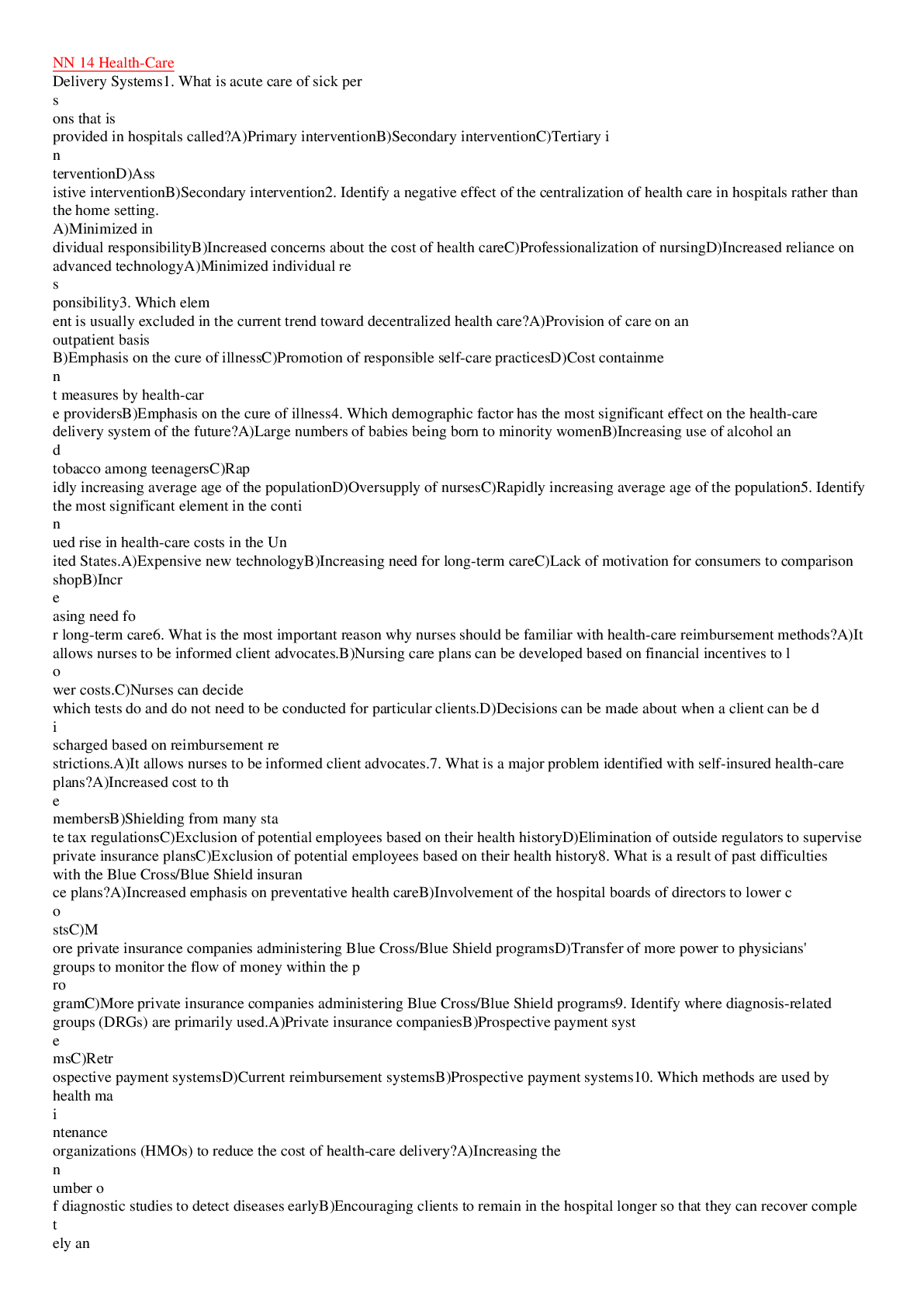
Buy this document to get the full access instantly
Instant Download Access after purchase
Buy NowInstant download
We Accept:

Reviews( 0 )
$10.00
Can't find what you want? Try our AI powered Search
Document information
Connected school, study & course
About the document
Uploaded On
Nov 07, 2022
Number of pages
3
Written in
All
Additional information
This document has been written for:
Uploaded
Nov 07, 2022
Downloads
0
Views
44












